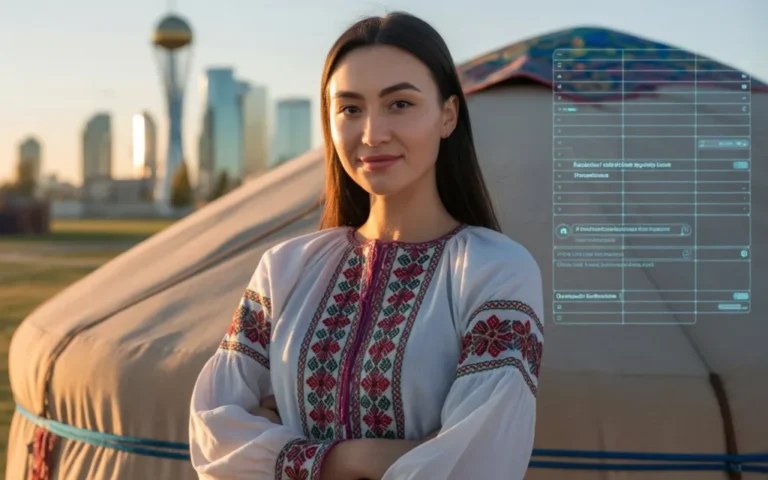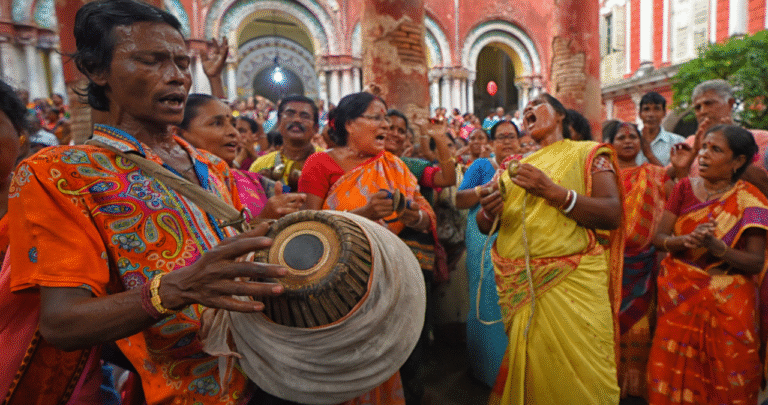
Asylmendibaeva
The term ‘asylmendibaeva‘ has emerged as a focal point in contemporary discussions that encompass a variety of themes such as cultural identity, societal change, and the dynamics of modern life. This multifaceted concept encapsulates both historical significance and current relevance, reflecting broader societal narratives that influence various communities. To fully appreciate asylmendibaeva, one must consider its roots and the context from which it has evolved. Historically, asylmendibaeva signifies more than just an individual or event; it symbolizes a collective experience shared by many in an ever-changing world.
The cultural relevance of asylmendibaeva extends beyond mere recognition; it invites widespread engagement, urging us to delve deeper into the intricacies of its manifestation in society. As a reflection of collective memories and identities, asylmendibaeva serves as a lens through which we can examine the narratives that shape our understanding of self and community. This concept resonates deeply with individuals who navigate the complexities of their heritage and modernity, often creating a dialogue about belonging and acceptance in a rapidly evolving social landscape.
As discussions around asylmendibaeva progress, it is essential to acknowledge the nuances that define it. These elements converge to form an inclusive framework that encourages a multifarious exploration of identity, recognition, and history. The significance of asylmendibaeva becomes increasingly apparent, prompting a reevaluation of how we view traditional narratives and their relevance to contemporary issues. The upcoming sections will delve into specific aspects, illuminating the implications of asylmendibaeva in today’s discourse, thus setting the stage for a comprehensive understanding of this pivotal concept.
Historical Background and Comparisons
The concept of asylmendibaeva can be traced back to various pivotal moments in history that have shaped its current interpretation. Initially, this term emerged in the context of socio-political movements where issues of asylum and migration were at the forefront. The early use of asylmendibaeva coincided with significant global shifts, such as the aftermath of World War II, which saw a large displacement of populations and the establishment of international frameworks focused on the rights of displaced individuals. This historical backdrop laid the foundation for contemporary debates surrounding asylum and humanitarian efforts.
Furthermore, the evolution of asylmendibaeva is not an isolated phenomenon but rather parallels other significant historical quests for justice and refuge. For instance, movements for civil rights and anti-colonial struggles during the 20th century further illuminated the importance of providing safe havens for marginalized groups. The response to global crises, such as the refugee influx from conflict zones, has continued to align with the principles underpinning asylmendibaeva. These comparisons facilitate a deeper understanding of its enduring relevance in contemporary discourse.
Moreover, the examination of figures who have championed the cause of asylum seekers offers a multifaceted view of asylmendibaeva. Activists, policymakers, and scholars have contributed to the evolving narrative of what it means to seek asylum. For example, the work of prominent human rights advocates has often mirrored the core tenets of asylmendibaeva, emphasizing the importance of empathy, humanitarian aid, and global cooperation. This historical context enriches our comprehension and appreciation of the discourse surrounding asylmendibaeva today, showcasing its significance as a vital element in the ongoing dialogues about human rights and social justice in the modern era.
Thematic Analysis and Character Exploration
The exploration of Asylmendibaeva encompasses various themes that resonate throughout its narrative, reflecting both cultural nuances and universal human experiences. At the core of this analysis is the examination of key characters who embody the thematic essence of Asylmendibaeva, each contributing significantly to the overarching message and depth of the discourse. These characters serve as vehicles through which the themes are articulated and explored, making their roles indispensable in understanding the narrative’s intricacies.

One prominent theme present in Asylmendibaeva is identity, particularly the struggle and evolution of self in a rapidly changing world. Characters connected to this theme are often portrayed grappling with their heritage and aspirations amidst external pressures. This duality of experience—navigating personal desires while adhering to societal expectations—enriches the narrative, offering audiences a multifaceted perspective on identity formation. Furthermore, the interplay of tradition and modernity is evident in the experiences of the characters, as they seek to balance their ancestral roots with contemporary realities.
Another significant theme is resilience, highlighting the characters’ ability to overcome adversity. The trials faced by these individuals reflect broader societal challenges encountered in today’s context, making them relatable figures for contemporary audiences. Their journeys exemplify the strength of the human spirit, underscoring the importance of determination and perseverance. This thematic depth provides a platform for discussing broader societal issues, prompting engagement and reflection among readers.
Moreover, the narrative intricately weaves in the theme of community and interconnectedness. Characters influenced by Asylmendibaeva often emphasize the significance of communal ties and support systems, suggesting that personal journeys are rarely solitary but rather shaped by the collective experience. This thematic exploration encourages discussion on shared struggles and collective empowerment, reinforcing the importance of solidarity in addressing contemporary challenges.
Contemporary Relevance and Impact
The concept of Asylmendibaeva continues to hold significant relevance in contemporary discourse, shaping various dimensions of social, cultural, and intellectual interactions. Its influence is reflected in a multitude of platforms, from academic circles to popular media, highlighting its broad appeal and applicability. This significance can be attributed to the unique stylistic features inherent in Asylmendibaeva, characterized by its nuanced approach and the ability to engage diverse audiences. The thoughtful integration of thematic elements resonates well with differing demographic segments, promoting discussions that bridge generational and cultural divides.
Moreover, the educational value of Asylmendibaeva cannot be understated. It serves as a critical lens through which to analyze contemporary societal issues, fostering a deeper understanding of the complexities surrounding cultural narratives and identity formation. Asylmendibaeva provides a framework for exploring interdisciplinary connections, allowing individuals to draw insights from various fields while enhancing their critical thinking skills. This aspect has made it a vital resource in academic settings, motivating students and scholars alike to engage with content critically and purposefully.
The accessibility of discussions surrounding Asylmendibaeva plays a pivotal role in its impact. The subject invites contributions from individuals of varying backgrounds and experiences, cultivating an inclusive environment that encourages participation and dialogue. This collective engagement has led to a rich tapestry of interpretations and critiques, illuminating the multifaceted nature of the discourse. Expert opinions, as well as grassroots perspectives, have propelled conversations forward, creating space for ongoing reflections on its significance.
Asylmendibaeva’s critical reception further underscores its place in modern discussions. Scholars have lauded its ability to invoke critical analyses and spark transformative conversations, positioning it as an essential topic for future research and exploration. Evaluating its enduring influence prompts us to consider how it will continue to shape perspectives and foster dialogue in the years to come.
Frequently Asked Questions about Asylmendibaeva
Asylmendibaeva remains a topic of considerable discussion and interest. To better understand its relevance and applications, we have compiled a list of frequently asked questions that address common inquiries.
1. What is the origin of the term Asylmendibaeva?
Asylmendibaeva is believed to have emerged from a specific cultural and historical context, reflecting particular societal values. Its roots can typically be traced back to various academic discussions focused on interdisciplinary studies, showcasing its evolution over time.
2. How does Asylmendibaeva relate to contemporary issues?
The significance of Asylmendibaeva can often be seen in the framework of contemporary societal challenges. Its concepts may be applied to discussions surrounding ethics, identity, and community engagement, offering valuable insights into how these themes are interwoven in today’s discourse.
3. What fields benefit from the study of Asylmendibaeva?
Asylmendibaeva is not confined to a single domain; rather, it spans various disciplines including sociology, anthropology, and cultural studies. Academics and practitioners in these fields can derive profound understandings by integrating Asylmendibaeva into their research and practice.
4. Are there criticisms associated with the ideas surrounding Asylmendibaeva?
Critiques often arise regarding the interpretations and applications of Asylmendibaeva. Some argue that certain perspectives may lead to oversimplification of complex issues, while others advocate for a broader lens to capture the nuances embedded within its discourse.
5. How can one engage with the concepts of Asylmendibaeva in practical settings?
Engagement with Asylmendibaeva can be achieved through workshops, discussions, and collaborative projects that encourage critical thinking and reflection. This approach not only deepens understanding but also fosters meaningful interactions among participants, promoting a richer dialogue around its themes.
In conclusion, the questions surrounding Asylmendibaeva illustrate its complexities and the enduring relevance it holds in modern discourse. By addressing these queries, individuals can gain a more comprehensive view of its significance in today’s world.







